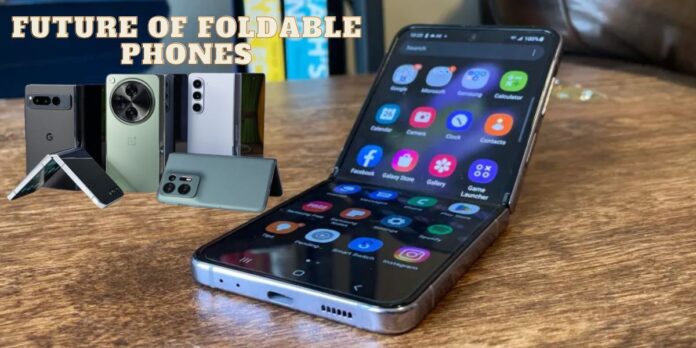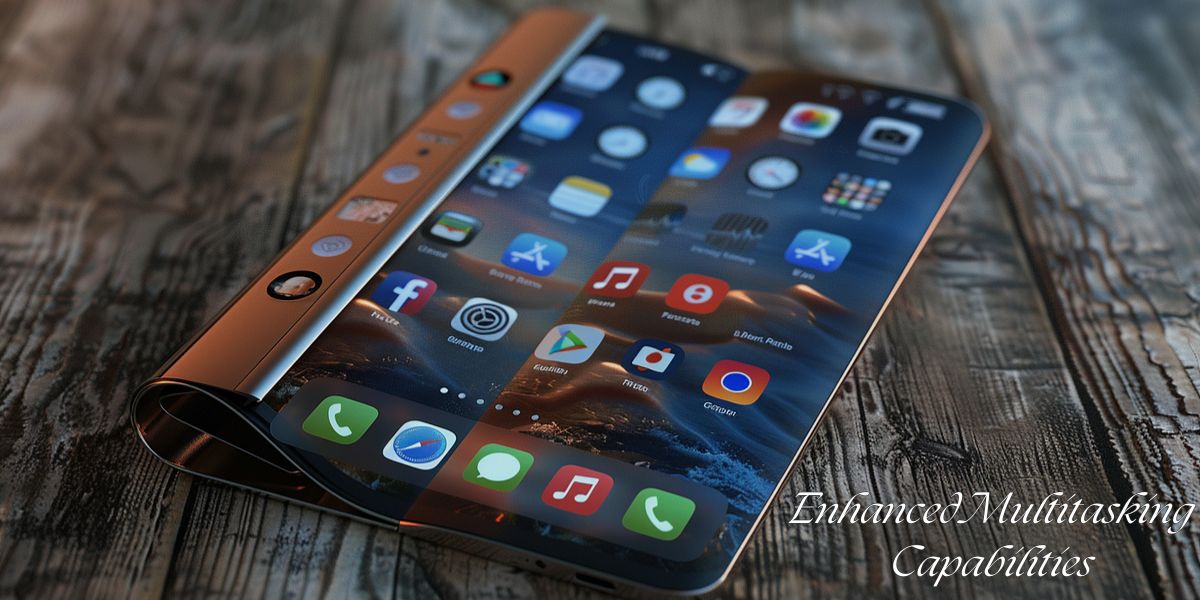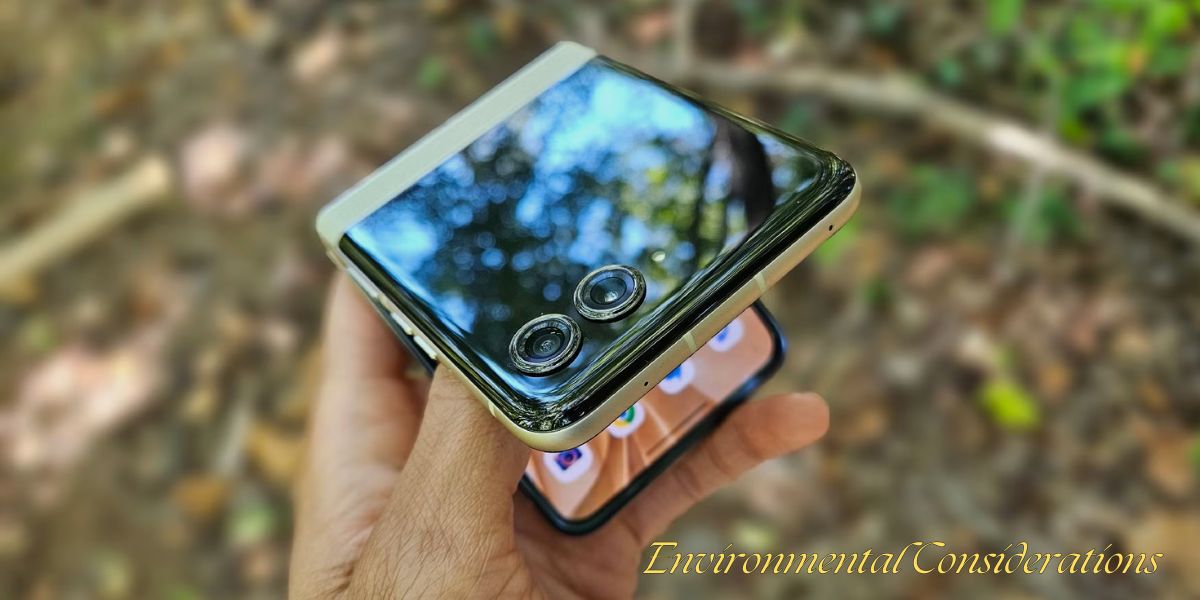Foldable phones represent one of the most exciting technological advancements in the mobile industry today. These devices combine the functionality of a smartphone with the convenience of a larger screen, all while maintaining portability. As foldable technology continues to evolve, it is reshaping how we interact with our devices. In this article, we will explore the future of foldable phones, from their current innovations to what we can expect in the coming years.
- Foldable phones offer a combination of portability and versatility, allowing users to switch between a compact smartphone and a larger tablet-like display in seconds.
- They provide an immersive experience for video streaming, gaming, and multitasking, all while fitting into a pocket or purse.
The Current State of Foldable Phones
Foldable phones are still in their early stages of development, but they have come a long way since their introduction. Early models, like the Samsung Galaxy Fold, initially faced issues with durability and screen reliability. However, companies have made significant improvements in response to user feedback, resulting in more durable and user-friendly devices.
- Modern foldable phones now feature stronger hinges, improved displays, and better protection against dust and debris, addressing initial concerns about their lifespan.
- Brands like Samsung, Huawei, and Motorola have embraced foldable technology, each offering unique design elements and features that cater to different users.
Enhanced Multitasking Capabilities
One of the most promising aspects of foldable phones is their ability to enhance multitasking. With larger displays and the ability to run multiple apps simultaneously, foldable phones allow users to increase their productivity without the need for multiple devices.
- The split-screen functionality enables users to view multiple apps side by side, making it easier to work on documents, browse the web, and check emails all at once.
- Whether you’re editing photos, responding to messages, or playing games, the increased screen space offers greater flexibility and convenience compared to traditional smartphones.
The Role of 5G in Foldable Phones
As 5G networks continue to roll out globally, foldable phones are set to benefit significantly from the increased speed and low latency of this next-generation technology. The combination of foldable displays and 5G connectivity opens new possibilities for streaming, gaming, and real-time communication.
- 5G enables faster downloads, smoother streaming, and more responsive gaming experiences, making foldable phones ideal for media consumption and online gaming.
- Additionally, 5G technology can further enhance productivity by providing faster data transfers and cloud access, enabling seamless remote work from anywhere.
Innovation in Foldable Phone Design
One of the most exciting aspects of foldable phones is their potential for innovation in design. Manufacturers are experimenting with different form factors to find the perfect balance between aesthetics and functionality. While clamshell designs like the Samsung Galaxy Z Flip emphasize portability, book-style designs like the Galaxy Z Fold prioritize larger displays for multitasking and media consumption.
- Some companies are exploring rollable displays, where the screen can expand and contract to suit the user’s needs, offering even more versatility.
- Foldable phones are also becoming slimmer and more durable, thanks to advances in materials like ultra-thin glass and flexible OLED technology.
Future Applications for Foldable Technology
Beyond smartphones, foldable technology has the potential to impact other areas of technology and consumer electronics. Companies are already experimenting with foldable laptops, tablets, and even wearables. As foldable technology becomes more refined, we can expect to see it integrated into a wide range of devices.
- Foldable laptops could offer the portability of a tablet with the power of a traditional laptop, making them ideal for students, professionals, and travelers.
- Wearable devices, like smartwatches, could feature foldable screens, offering more display space without increasing the overall size of the device.
The Impact on App Development and User Interfaces
As foldable phones become more mainstream, app developers will need to adapt their applications to fully leverage the unique features of foldable displays. Apps designed for foldable phones must offer a seamless experience whether the device is folded or unfolded.
- App developers will focus on creating responsive designs that adjust automatically to different screen sizes and orientations, ensuring a smooth user experience across all modes.
- The introduction of foldable phones may also lead to the development of entirely new types of apps that take advantage of the dual-screen format, opening up new possibilities for gaming, creativity, and productivity.
Durability and Longevity: Overcoming Challenges
One of the biggest challenges for foldable phones is durability. Early models were criticized for having fragile screens and hinges, which led to concerns about their long-term usability. However, manufacturers have made significant strides in addressing these issues.
- Advances in materials, such as ultra-thin glass and stronger hinges, have improved the overall durability of foldable phones, making them more resistant to wear and tear.
- Companies are also focusing on waterproofing and dust resistance to ensure that foldable phones can withstand everyday use in a variety of environments.
Environmental Considerations and Sustainability
As with any new technology, the environmental impact of foldable phones is a concern for both consumers and manufacturers. The production of foldable displays requires more complex manufacturing processes and materials, which can increase their carbon footprint.
- Manufacturers are increasingly prioritizing sustainability by using recycled materials and reducing waste in the production process.
- Additionally, foldable phones may have longer lifespans due to their versatility, potentially reducing the need for consumers to upgrade their devices as frequently.
The Cost Factor: Will Foldable Phones Become Affordable?
Currently, foldable phones are positioned as premium devices, with prices significantly higher than traditional smartphones. However, as the technology matures and production costs decrease, we can expect foldable phones to become more affordable and accessible to a wider audience.
- As competition among manufacturers increases, prices for foldable phones are likely to drop, making them more appealing to mainstream consumers.
- Additionally, new financing options and trade-in programs may make foldable phones more affordable for those who are eager to adopt the technology.
Conclusion
The future of foldable phones is undeniably exciting. These devices offer a unique blend of innovation, productivity, and entertainment, making them an attractive option for tech enthusiasts and professionals alike. With continued advancements in design, durability, and functionality, foldable phones are poised to become a staple in the mobile market.
- As 5G networks expand, app developers adapt, and manufacturers refine their designs, foldable phones will continue to evolve, offering even more possibilities for users.
- Whether you’re interested in multitasking, gaming, or simply enjoying a larger display, foldable phones represent the next big leap in mobile technology.
In the years to come, foldable phones will likely become more affordable, durable, and feature-rich, making them a viable option for everyday consumers. The future of foldable phones is bright, and we are just beginning to see the full potential of this groundbreaking technology.





